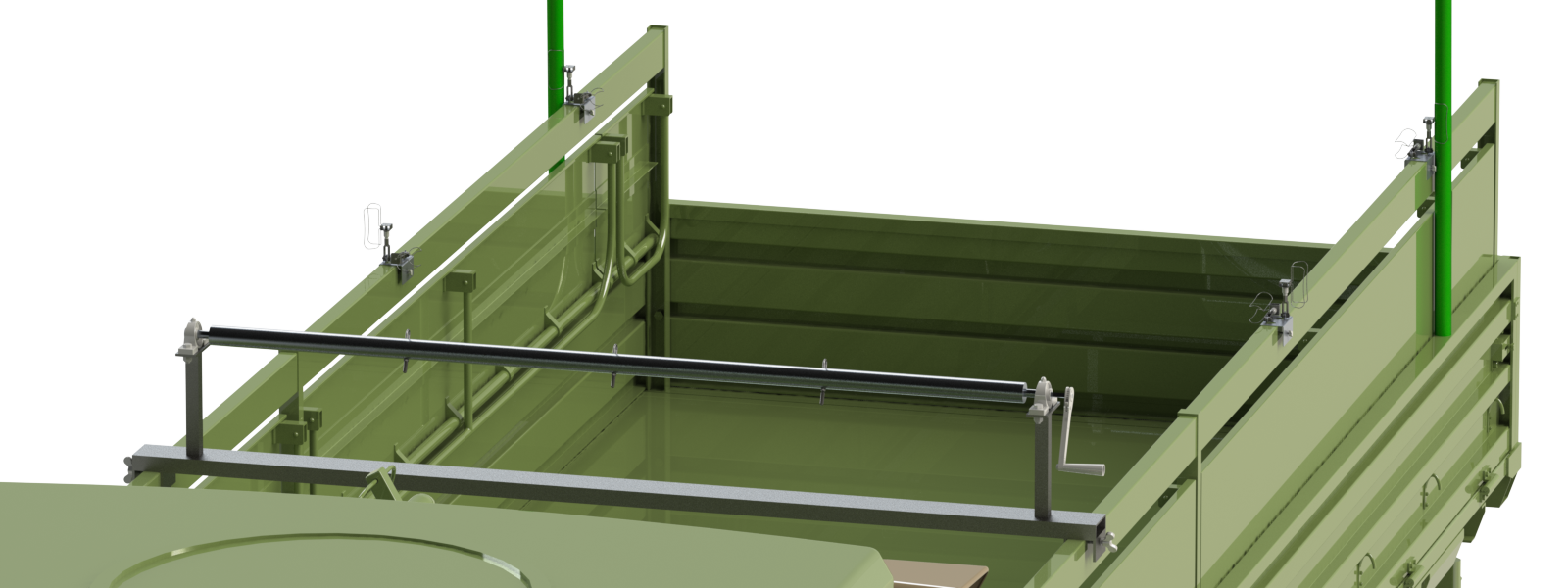Team Members

Jonathan Acosta, Monzurul Haque, Henna Shah, Brian Barfield, Jose Mejia, Samuel Thomasson, Ilya Dukhovskoy, Edouard Pierre-Noel, Jaime Van Der Veken
Abstract

The team’s objective was to create a rapid deployable camouflage system that could be easily stored, transported, and deployed by a minimal number of soldiers in a short amount of time for the US Army. The current ULCANS system is comprised of netting, poles, and the use of a LMTV truck to set up the camouflage netting. Some major requirements given by the Army in terms of the design were that no permanent attachments were to be made to the vehicle, the concealment method would need to decrease the time used for deployment and rolling back up, and the design would need to withstand harsh conditions and misuse. Both the tarp and poles would need to be incorporated into the final design. To achieve the design objectives, background research was first done on the topic to determine patents and designs that were already on the market. Car covers, outdoor umbrellas, and awning rolling systems were researched and weighted based on price, useability, and relevance to the design objectives. Through multiple design iterations, a final roller design was selected along with a pole attachment method that allows for the poles to be attached to the side of the vehicle. The main features of the final design for the roller include a base plate that can rest on the bed of the truck. The roller drum fits horizontally across the bed and is connected to the base plate via bearing mounts. A shaft handle was added to the end of the roller to allow soldiers to easily roll up and roll out the tarp as necessary. The pole attachment design allows for 15 degrees of freedom and is comprised of thin wire-like clamps that allow the poles to easily slide in. These clamps can be attached to the sides of the truck.
Pitch Video
3D Interactive Product Model
The following is an interactive 3D model of the product design. You can view and rotate the product assembly in different orientations and views, including an exploded view to see the various parts that make up the assembly.